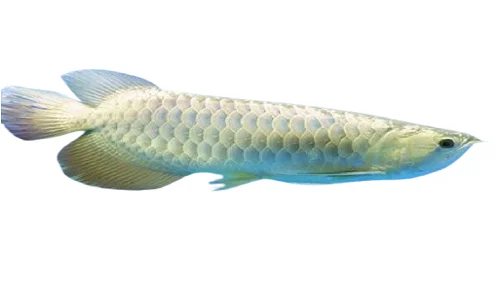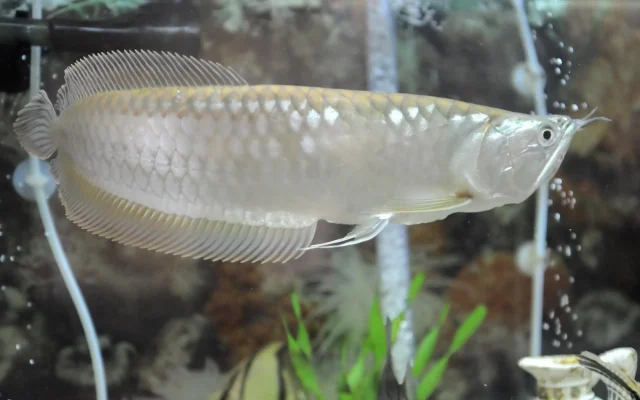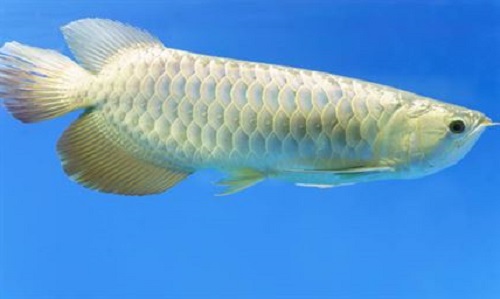Unveiling the Jardini Arowana: A Glimpse into Their History and Appearance
Unveiling the Jardini Arowana: A Glimpse into Their History and Appearance
The Jardini Arowana, also known as the Australian Arowana, Pearl Arowana, or Gulf Saratoga, is a captivating freshwater fish native to Australia and New Guinea. This bonytongue fish (Scleropages Jardini) boasts an ancient lineage and a mesmerizing appearance, captivating hobbyists worldwide. They are a prized possession for aquarists due to their stunning looks, fascinating hunting behaviors, and intelligent nature.
- Native to Australia and New Guinea
- Closely related to other Arowana species
- Adapted to freshwater habitats over millions of years
A Dazzling Display: Exploring the Physical Characteristics of Jardini Arowanas
Jardini Arowanas are renowned for their striking appearance, which has earned them the nickname “dragonfish.” Their bodies are covered in large, pearlescent scales that shimmer with iridescent hues, giving them a truly mesmerizing appearance.
Key physical features:
- Elongated body shape
- Large, upturned mouth
- Prominent barbels for sensing prey
- Can grow up to 90 cm (35 inches) in length

The Hunter Within: Unveiling the Predatory Behavior of Jardini Arowanas
Masters of Deception: How Jardini Arowanas Camouflage and Ambush Prey
In their natural habitat, Jardini Arowanas are skilled predators that rely on stealth and ambush tactics to catch their prey. Their coloration allows them to blend seamlessly with their surroundings, making them nearly invisible to unsuspecting prey.
Predatory fish behavior:
- Use vegetation and submerged structures for cover
- Remain motionless for extended periods
- Strike with lightning-fast speed when prey is within range
Leaping for Lunch: The Impressive Jumping Ability of Jardini Arowanas
One of the most remarkable features of Jardini Arowanas is their ability to leap out of the water to catch prey. This unique adaptation allows them to capture insects and small animals resting on overhanging vegetation.
Important note for aquarists: Due to their jumping ability, it’s crucial to have a secure, tightly-fitting lid on your Arowana tank to prevent escapes.

Creating a Haven for Your Dragon Fish: The Ideal Jardini Arowana Tank Setup
Sizing Up Their Space: Choosing the Right Size Aquarium for Jardini Arowanas
When it comes to Jardini Arowana care, providing adequate space is paramount. These large aquarium fish require substantial swimming room to thrive and exhibit their natural behaviors.
| Arowana Life Stage | Minimum Tank Size |
|---|---|
| Juvenile | 200 liters (50 gallons) |
| Adult | 600 liters (150 gallons) |
Replicating Their Natural Habitat: Essential Tank Decorations and Substrate
To create a comfortable environment for your Jardini Arowana, it’s essential to mimic their natural habitat. This includes:
- Using a fine, sandy Arowana substrate
- Adding driftwood and large rocks for hiding spots
- Incorporating hardy, live plants like Anubias or Java Fern
Keeping it Clean and Pristine: Filtration and Water Parameters for Jardini Arowanas
Maintaining excellent water quality is crucial for the health of your Jardini Arowana. Invest in a powerful filtration system capable of handling the bioload of these large fish.
Ideal Arowana water parameters:
- Temperature: 24-28°C (75-82°F)
- pH: 6.5-7.5
- Hardness: 5-15 dGH

Fueling the Fire: A Guide to the Jardini Arowana Diet
A Carnivorous Craving: Understanding the Dietary Needs of Jardini Arowanas
As predatory fish, Jardini Arowanas have a primarily carnivorous diet. In the wild, they feed on a variety of prey items, including:
- Small fish
- Insects
- Crustaceans
- Occasionally, small mammals and birds
Variety is Key: Offering a Balanced Diet for Optimal Health
To ensure your Jardini Arowana receives all the necessary nutrients, it’s essential to provide a varied diet. While they prefer live prey, you can also offer:
- Frozen or freeze-dried bloodworms
- High-quality carnivore pellets
- Occasional treats like crickets or mealworms
Feeding schedule: Adult Arowanas should be fed 2-3 times per week, while juveniles may require daily feedings.
Considering Compatibility: Choosing Tank Mates for Your Jardini Arowana
Peaceful Coexistence: Suitable Tank Mates for Jardini Arowanas
Due to their predatory nature, Jardini Arowanas can be challenging to house with other fish. However, some compatible fish for Arowanas include:
- Large catfish species
- Peaceful cichlids
- Silver dollars
Species to Avoid: Understanding Potential Issues with Incompatible Fish
When selecting tank mates, avoid:
- Small fish that may be seen as prey
- Aggressive or territorial species
- Fish with long, flowing fins that may attract the Arowana’s attention
Breeding the Elusive Dragon: Captive Breeding of Jardini Arowanas
The Challenges of Captive Breeding: Understanding the Complexities of Reproduction
Jardini Arowana breeding in captivity is a complex and challenging process. Success requires:
- Extensive knowledge of their natural breeding behaviors
- Precise control of water parameters
- Patience and dedication
Setting the Stage for Success: Creating Ideal Conditions for Breeding Jardini Arowanas
To encourage breeding:
- Provide a spacious tank (1000+ liters)
- Create hiding spots with driftwood and plants
- Gradually raise the water temperature to mimic seasonal changes
Beyond the Basics: Additional Care Considerations for Jardini Arowanas
Maintaining Optimal Health: Monitoring Water Quality and Fish Wellness
Regular maintenance is crucial for Jardini Arowana health:
- Perform weekly water changes (20-30%)
- Test water parameters regularly
- Monitor for signs of stress or illness
Key Takeaways
- Jardini Arowanas are ancient, predatory fish native to Australia and New Guinea.
- They require large tanks (600+ liters for adults) with excellent filtration.
- A varied, carnivorous diet is essential for their health.
- Careful consideration is needed when choosing tank mates.
- Breeding Jardini Arowanas in captivity is challenging but possible with the right setup.
Frequently Asked Questions
- How big do Jardini Arowanas get? Jardini Arowanas can grow up to 90 cm (35 inches) in length.
- What do Jardini Arowanas eat? They are carnivorous and primarily feed on small fish, insects, and crustaceans.
- Are Jardini Arowanas aggressive? They can be territorial and may show aggression towards smaller tank mates.
- How often should I feed my Jardini Arowana? Adult Arowanas should be fed 2-3 times per week, while juveniles may require daily feedings.
- Can Jardini Arowanas be kept with other fish? Yes, but only with carefully selected, larger, peaceful species.
- How long do Jardini Arowanas live? With proper care, they can live 20+ years in captivity.
- Are Jardini Arowanas legal to keep as pets? Legality varies by country and region. Always check local regulations before acquiring one.
References
- Australian Government Department of Agriculture, Water and the Environment. “Freshwater Fish of Northern Australia.”
- FishBase. “Scleropages jardini – Jardini Arowana.” fishbase.se
- University of New South Wales. “Bonytongue Fish Evolution.” unsw.edu.au
- The Australian Museum. “Arowana – The Dragon Fish.” australian.museum
- Northern Territory Government. “Aquatic Life in Northern Australia.” nt.gov.au
- Practical Fishkeeping. “Care and Breeding of Jardini Arowanas.” practicalfishkeeping.co.uk
- Smithsonian National Zoo. “Arowanas: Dragon Fish of the Amazon.” nationalzoo.si.edu


 Deutsch
Deutsch